With about 600 muscles in the human body and a fitness industry awash with gurus specializing in everything from calf to neck training, most MMA fighters and coaches are not wanting for exercise recommendations – in fact, it’s quite the opposite – most fighters and coaches simply want to cut through the clutter and discover simple yet effective exercises that will help them reach their goals. That’s precisely what we’ll be covering in this article.
The first thing to understand about exercise selection is that there are many different types of resistance training movements. One good way to classify them all is based on how they load your body. For example, you can have exercises that load single-joints and primarily focus on isolating one muscle group, like the biceps using various curls, as shown below.
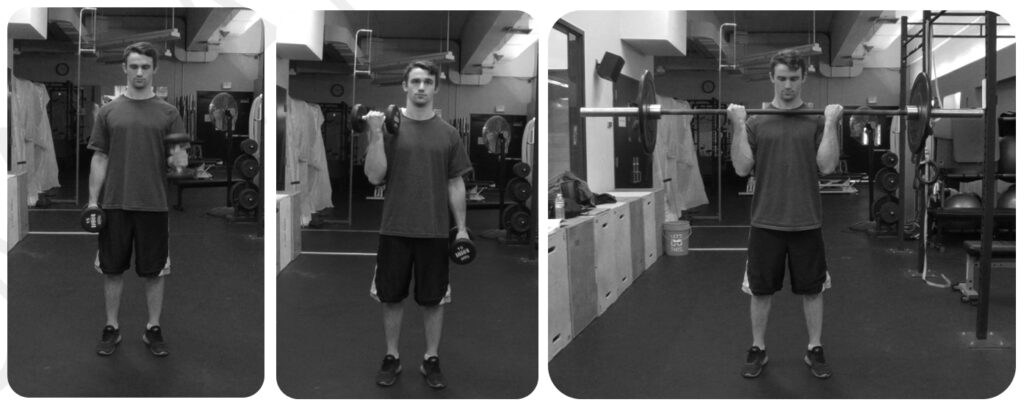
Importantly, these don’t load the spine or hips (which we’ll call the core), with any real intensity but they’re great at focusing attention on a precise group of muscles, and this is really important in sports like bodybuilding, but it may be less relevant in sports like MMA. Of course, these should be in your training program, but there are more important types of resistance exercises you should include.
You also have multi-joint exercises that don’t load the spine/hip joint. The seated leg press shown here an example of this (shown below).
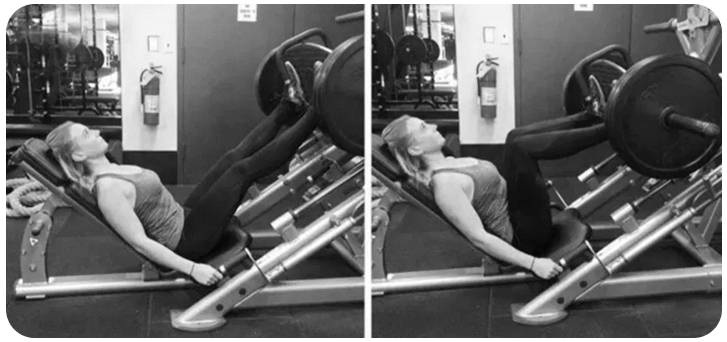
Again, there is a time and place for these exercises, but there are more important exercises to consider for the MMA fighter. For example, you have exercises that are core multi-joint with spinal and hip loading – the squat, deadlift and lunge are examples, and I’m sure you’ll agree that these types of exercises are effective in preparing fighters for the demands of MMA.

Finally – and perhaps most importantly in MMA – you have powerful multi-joint movements with spinal and hip loading. Examples of these types of exercise include Olympic lifts like the snatch and power clean (shown below). These exercises are extremely important and should be included in a well-rounded MMA training program.
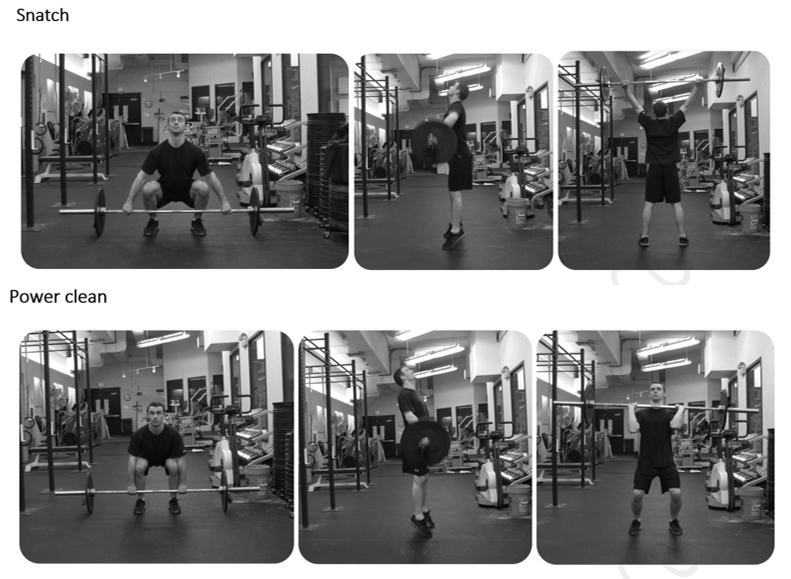
So now you should have a good understanding of the different types of exercises. But before we start recommending specific exercises, we need to think about the movement patterns and injuries that are unique to MMA. This will help us narrow in on the most effective resistance exercises that keep fighters safe, strong, and powerful.
Let’s first consider a movement analysis for MMA. As you know, the sport incorporates standing and ground-based grappling and striking. It incorporates level changes, pushing, puling, and rotation in all planes of movement. And all of these movements take place at a wide range of intensities and separated by intermittent rest periods. With this in mind, your training goals should include engaging all major muscle groups. You should incorporate concentric, isometric, and eccentric contractions, and you should aim to develop high levels of muscular endurance, strength, and power.
Now on to the injury analysis. There’s actually some research on this: One study of about 2400 male MMA fighters found an injury rate of 246 per 1000 exposures to a fight (Thomas & Thomas, 2018). Another study by Lystad et al., (2014) noted that 66 to 78 % of MMA injuries were to the head with about 6 to 12 % to the wrist and hands. Lacerations, fractures, and concussions were the most common, and there is an obvious potential for traumatic brain injury (Lockwood et al., 2017). A study by Fares (2019) looked at UFC fights from 2016 to 2018. A total of 291 injuries were recorded in 285 fights across nine weight classes (only 40 of these were female fights, so the data are skewed). The overall injury rate was 54 per 100 fighter exposures for males, and 30 injuries per 100 fighter exposures for females. The study found that a decision was the most common way a match ended. Knockouts were much higher in males. Submissions were higher in females. Head injuries (67%) were the most common with a rate of 34 per 100 fighter exposures. Upper limb injuries were higher in females. Lower limb injuries were higher in males. Head injuries were significantly associated with KOs’. Upper limb injuries and lower limb injuries were associated with matches that ended with Decision. The study also noted that compared to lower weight divisions, heavier weight divisions saw higher overall injury rates, head injuries, lower limb injuries, and more KOs’, with fewer upper limb injuries, less submissions, and less Decisions. So, taken together these data suggest a broad approach to pre-habilitative exercises should be adopted. MMA fighters should choose MMA-specific movements that encourage muscle balance and stability, along with healthy joint function and range of motion, while strengthening neck muscles to protect against cervical spine injuries.
There are some additional considerations when selecting exercises. Obviously, technique and experience will influence what you choose. You always need to master a technique first, then add weight. This is important for all movements, but especially multi-joint exercise that load the spine (deadlift, back squat), and particularly for power exercises like the snatch and power clean. The availability of resistance training equipment is also important because if you don’t have access to a piece of equipment you can’t do it. Time is also a factor, and it’s particularly important in MMA which feature a diverse combination of sport-specific skills that must be developed simultaneously. That’s why we at the MMA Training Bible choose exercises that give you the most bang for your buck. See below for a complete list of our recommended power, core, and accessory exercises, and a few abdominal/truck exercises.
The MMA Training Bible’s Resistance Training Exercise Recommendations
The main power exercises we recommend include the Hang Clean, Push Jerk / Push Press, Power Clean, Snatch, Jump-Squat, One-Arm Dumbbell/Kettlebell Snatch, Two-arm Kettlebell Swing, Power Drop, Depth Push-Up and the 45˚ Sit-Up.
The main core exercises we recommend include the Back Squat, Front Squat, Lunges, Deadlift, Bent-Over Row, One-Arm Dumbbell Row, Lat Pulldown/Chin-Ups, Bench Press, Incline Press, Seated Shoulder Press / Standing Push Press, Upright Row, Lateral Shoulder Raise, and Front Shoulder Raise.
The main accessory exercises we recommend include triceps extension variations and biceps curl variations.
The main abdominal/trunk exercises we recommend include the Bent-Knee Sit-Up / Ab Crunch, Stability Ball Pike, Stability Ball Roll-Out, and the Stability Ball Jack-Knife.
To make this easier for you to follow, we’ve included all the above exercises in a free PDF for quick download. In it you’ll get step-by-step images and descriptions for how to complete each of these exercises. You’ll also get 5 different sample workouts, two of which are entirely power-based.
See below for a representative example of the Power Clean exercise.
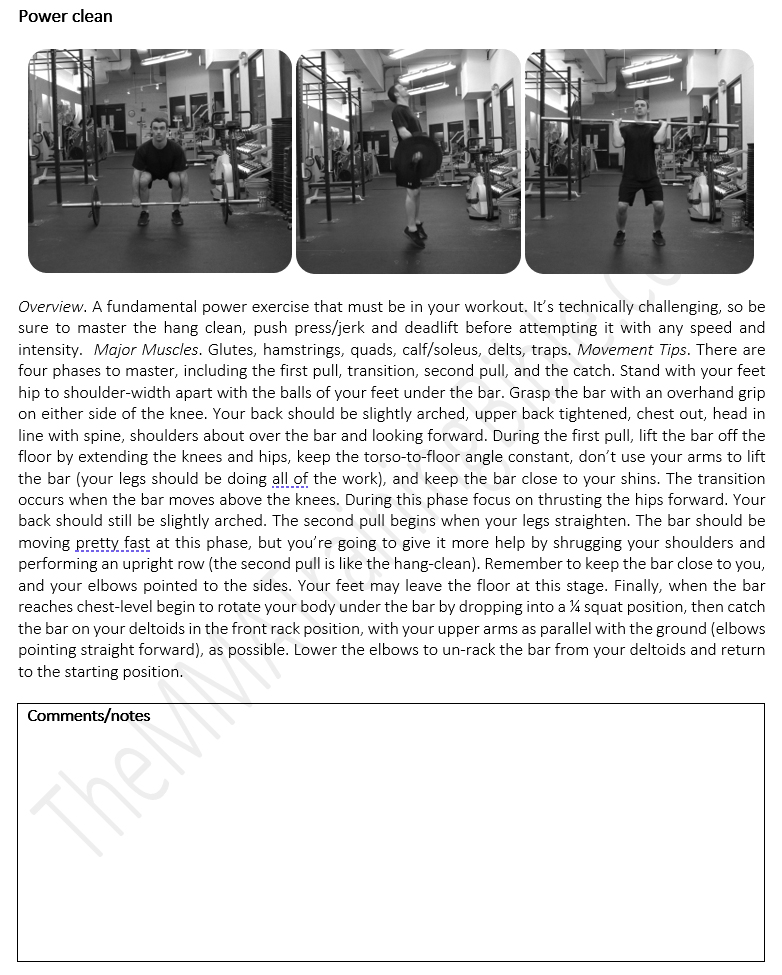
The resistance exercises recommended by the MMA Training Bible are chosen for their simplicity and effectiveness- but building an individualized training program around them can seem daunting. If you’re looking for support, consider The MMA Training Bible’s Peak Performance guide, which removes a lot of the guesswork. We’ll take you through the step-by-step process to create your own plan, and I’ll provide guidance on when you should increase and decrease your training frequency in order to optimize your adaptation to training for fight day.
So, I hope you now have a good understanding of how to implement simple and effective resistance training exercises into your workout. Keep your eye out for other articles in our resistance training series – we cover topics ranging from how much weight you should train with, to how much rest you should take between sets – if they’re not up yet, they soon will be, so be sure to subscribe to the blog and you won’t miss a thing!
Take care,
Dr. Gillis
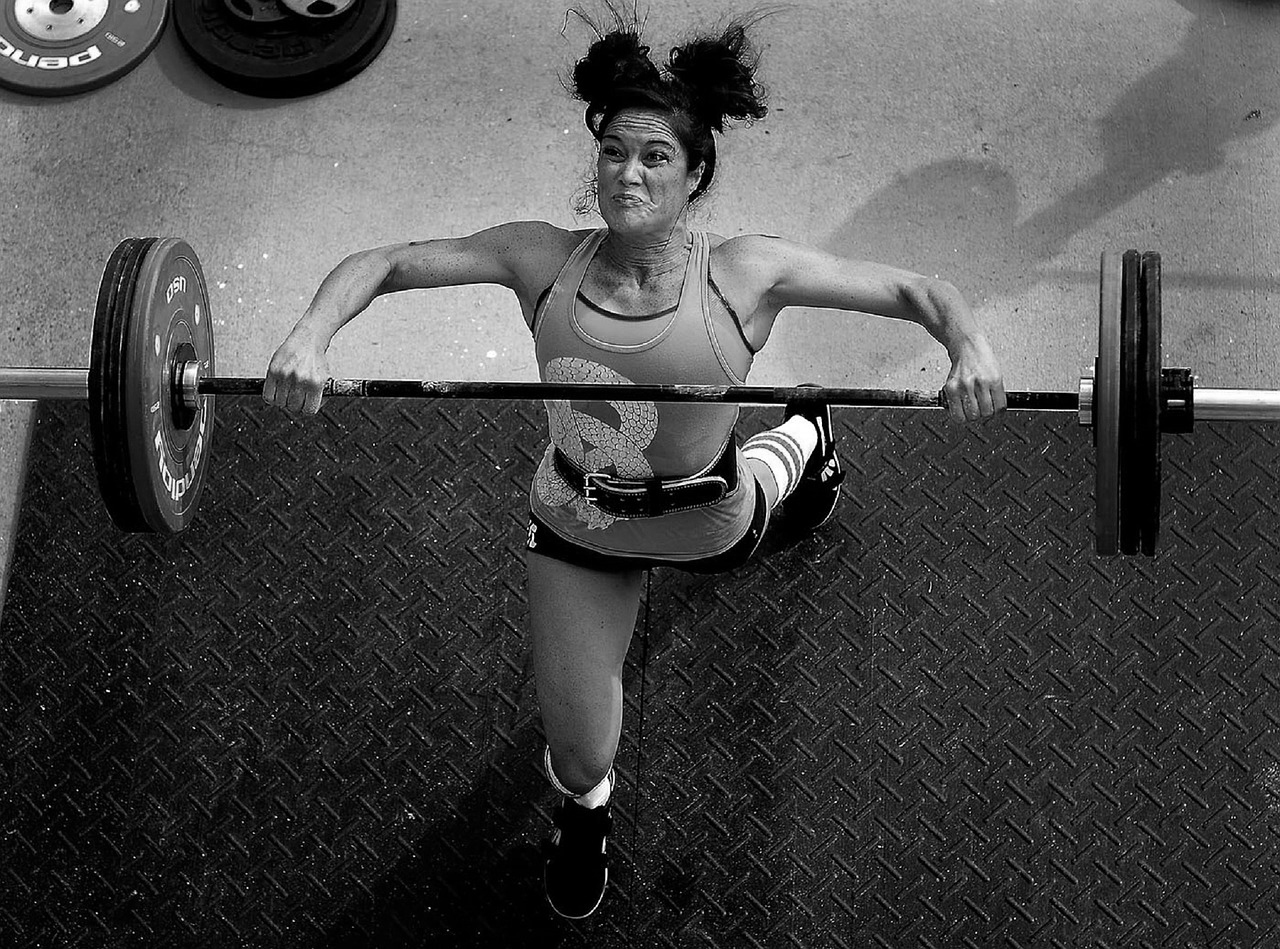
Leave a Reply